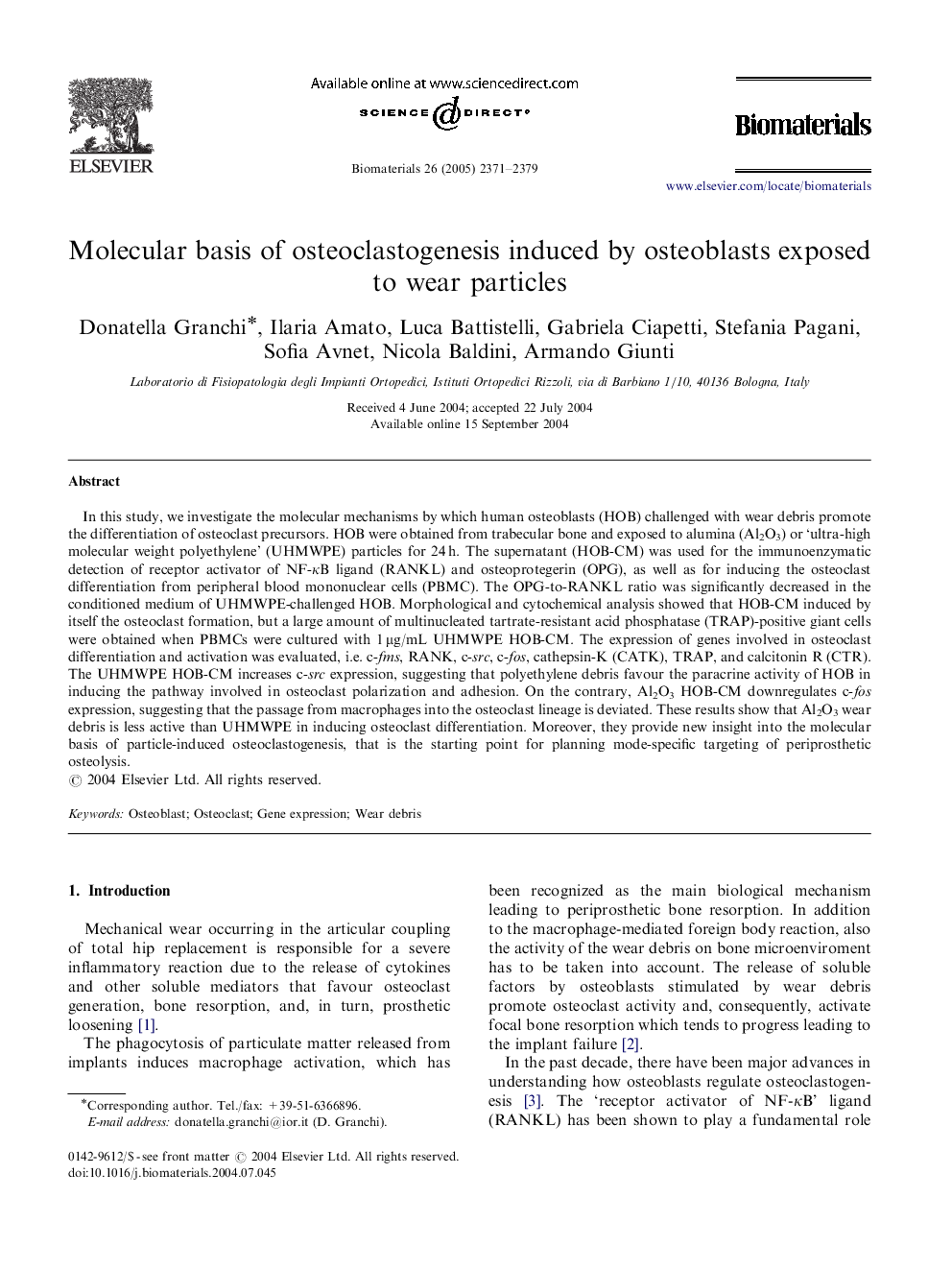| Article ID | Journal | Published Year | Pages | File Type |
|---|---|---|---|---|
| 12804 | Biomaterials | 2005 | 9 Pages |
In this study, we investigate the molecular mechanisms by which human osteoblasts (HOB) challenged with wear debris promote the differentiation of osteoclast precursors. HOB were obtained from trabecular bone and exposed to alumina (Al2O3) or ‘ultra-high molecular weight polyethylene’ (UHMWPE) particles for 24 h. The supernatant (HOB-CM) was used for the immunoenzymatic detection of receptor activator of NF-κB ligand (RANKL) and osteoprotegerin (OPG), as well as for inducing the osteoclast differentiation from peripheral blood mononuclear cells (PBMC). The OPG-to-RANKL ratio was significantly decreased in the conditioned medium of UHMWPE-challenged HOB. Morphological and cytochemical analysis showed that HOB-CM induced by itself the osteoclast formation, but a large amount of multinucleated tartrate-resistant acid phosphatase (TRAP)-positive giant cells were obtained when PBMCs were cultured with 1 μg/mL UHMWPE HOB-CM. The expression of genes involved in osteoclast differentiation and activation was evaluated, i.e. c-fms, RANK, c-src, c-fos, cathepsin-K (CATK), TRAP, and calcitonin R (CTR). The UHMWPE HOB-CM increases c-src expression, suggesting that polyethylene debris favour the paracrine activity of HOB in inducing the pathway involved in osteoclast polarization and adhesion. On the contrary, Al2O3 HOB-CM downregulates c-fos expression, suggesting that the passage from macrophages into the osteoclast lineage is deviated. These results show that Al2O3 wear debris is less active than UHMWPE in inducing osteoclast differentiation. Moreover, they provide new insight into the molecular basis of particle-induced osteoclastogenesis, that is the starting point for planning mode-specific targeting of periprosthetic osteolysis.
